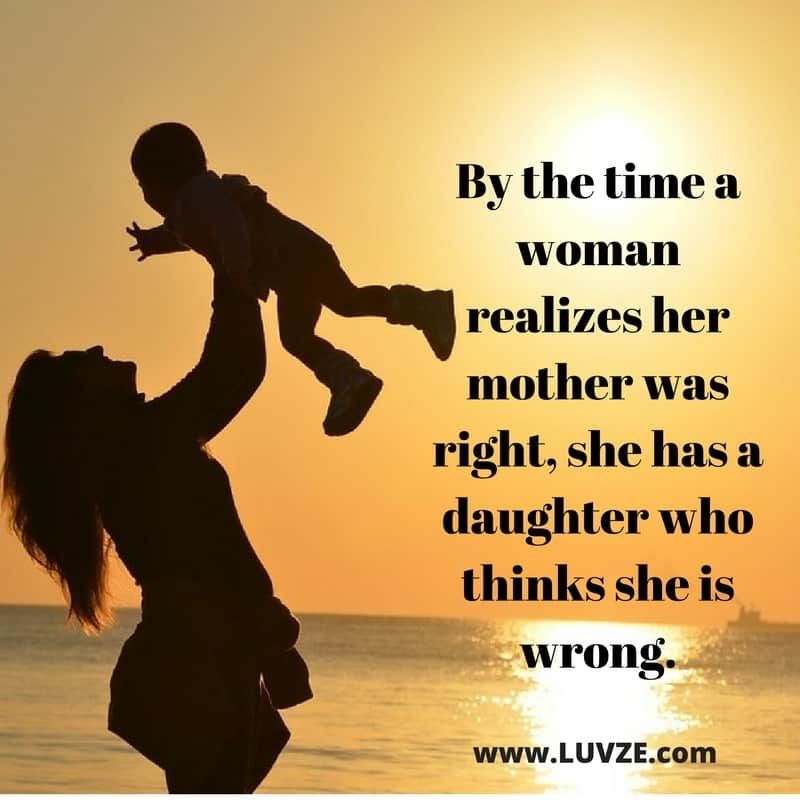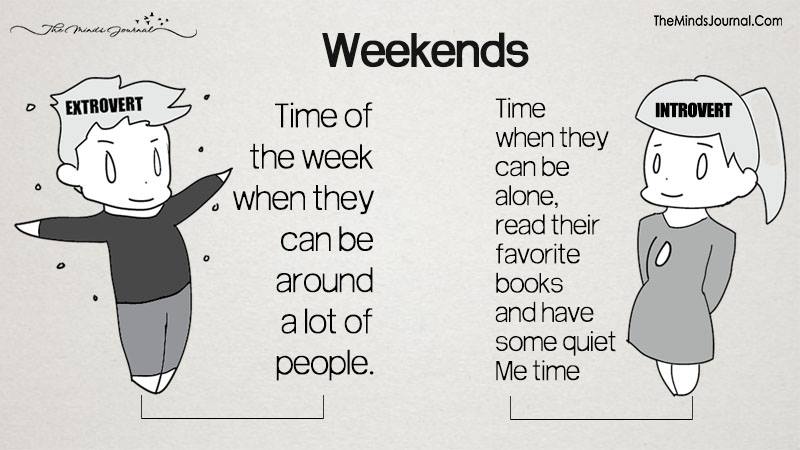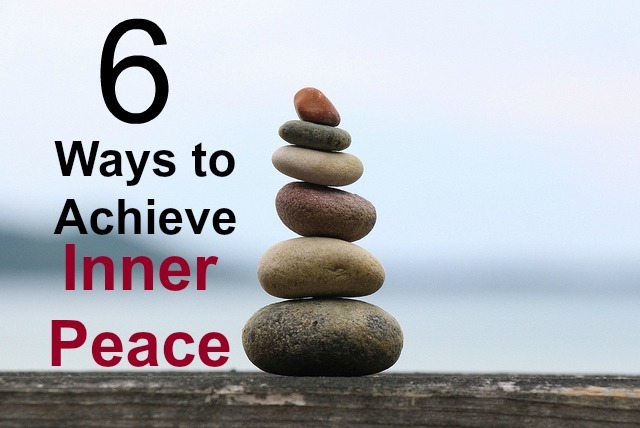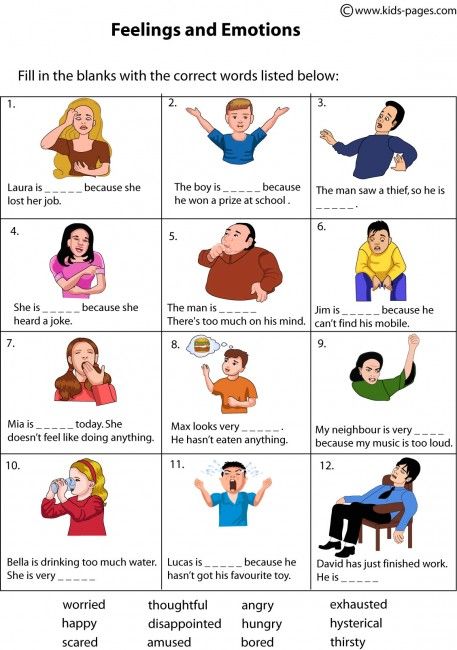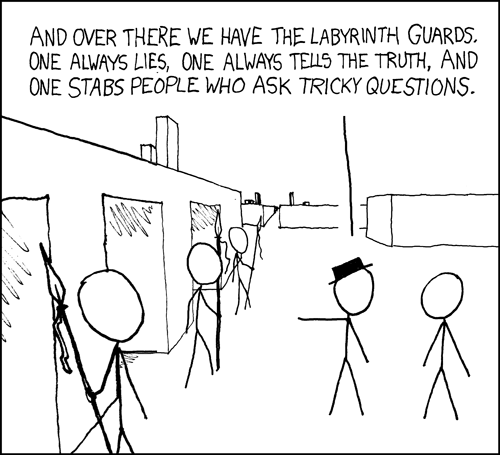Mother daughter difficult relationships
Uncovering the root cause of mother-daughter conflict
An experienced counselor recently admitted to me that she felt out of her depth when a mother and adult daughter both came to see her for help with their incessant arguing. She said that she struggled to identify the core reasons for their arguments, and she knew that the communication skills and boundaries she tried to instill in them did not address the core reasons for their relationship difficulties.
Sadly, this counselor is not alone. Colleagues frequently tell me that they feel unprepared when it comes to working with mothers and daughters. They blame the absence of specialized training. This lack of focus on the mother-daughter relationship creates unnecessary anxiety among counselors and psychotherapists, and frustration for female clients. For example, only in 2016 was the Adult Daughter-Mother Relationship Questionnaire developed (for more, see Julie Cwikel’s article in
The Family Journal). And in my office, all too often I hear mothers and daughters voice their frustrations about the lack of specialized help.
In this article, I share two insights that will help counselors understand the dynamics between a mother and daughter of any age. These insights come from the mother-daughter attachment model I have developed through my 20-plus years of listening to thousands of mothers and daughters of all ages from different countries and cultures. The model makes the complicated dynamics between mothers and daughters easy to understand, explains why mothers and daughters fight, and teaches how mothers and daughters can build strong, emotionally connected relationships.
I chose to specialize in the mother-daughter relationship back in the 1990s because that relationship is central to women understanding themselves. My relationship with my mother had shaped who I was, and when my daughter was born 30 years ago, I knew I had to change the harmful themes that were being passed down the generations. What began as a personal quest became my professional mission.
Mothers and daughters frequently tell me that they feel ashamed about their relationship difficulties. They feel that they “should” be able to get along because popular wisdom tells them that mothers and daughters are supposed to be close. This societal expectation makes mothers and daughters blame themselves for causing their relationship difficulties. The truth is, if my years of experience providing therapy are any indication, many women currently experience mother-daughter relationship conflict.
They feel that they “should” be able to get along because popular wisdom tells them that mothers and daughters are supposed to be close. This societal expectation makes mothers and daughters blame themselves for causing their relationship difficulties. The truth is, if my years of experience providing therapy are any indication, many women currently experience mother-daughter relationship conflict.
Based on the inquiries I receive from mothers and adult daughters from different countries, I believe that a larger, societywide dynamic is contributing to their relationship conflict. Often, I hear “hormones” being blamed as the cause for relationship problems, whether it is the teenage daughter’s or pregnant daughter’s hormones, or the menopausal mother’s hormones. Another common reason mothers and daughters give to explain why they are not getting along is their differing or similar personality traits. I have never found hormones or personality traits to be the core reasons for mother-daughter relationship conflict, however. Rather, I have concluded that society sets mothers and daughters up for conflict.
Rather, I have concluded that society sets mothers and daughters up for conflict.
In the first insight, I show that the mother-daughter relationship is not difficult to understand once we realize that mothers and daughters do not relate in a cultural vacuum. In recognizing that mothers and daughters relate within a sociocultural and multigenerational environment, the dynamics between them become easier to grasp. We see how life events, restrictive gender roles, unrealized career goals, and the expectation that women should sacrifice their needs in their caregiving role all shape how mothers and daughters view themselves and each other and how they communicate. To illustrate this dynamic, I share the story of my work with Sandeep, a young college student from England (name and identifying details have been changed).
In the second insight, I explain how patriarchy’s way of silencing and denying what women need is the root cause of most mother-daughter relationship conflict in different cultures around the world. To illustrate, I share my work with Miriam, a doctor from Sweden who comes from a feminist family (name and identifying details have been changed).
To illustrate, I share my work with Miriam, a doctor from Sweden who comes from a feminist family (name and identifying details have been changed).
Miriam and Sandeep come from different countries and cultural backgrounds, and their families are on opposite ends of the women’s rights continuum, yet their core relationship problem is the same. Both Miriam and Sandeep come from families in which women have not learned how to ask for what they need.
Insight No. 1: Mothers and daughters relate in a sociocultural environment
As is the case with any couple, mothers and daughters rarely fight over what they say they are arguing over. Sandeep and her mother were no exception to this rule. Sandeep was a young college student who lived at home. Her parents immigrated to England from India before Sandeep was born. Sandeep had three brothers, but she was the family’s only daughter.
Sandeep came to see me because she was feeling depressed about how critical her mother was. She was struggling to juggle her college work with the housework her mother and family expected her to do. She said her mother would accuse her of not being a good enough “housekeeper” and not caring enough for her mother when she was ill, which was often.
She was struggling to juggle her college work with the housework her mother and family expected her to do. She said her mother would accuse her of not being a good enough “housekeeper” and not caring enough for her mother when she was ill, which was often.
Sandeep had consulted a counselor before me who had suggested that her mother might be suffering from a personality disorder. I never got to meet Sandeep’s mother and work with her clinically, so I was unable to validate whether this might be the case. Regardless, even if Sandeep’s mother did have this diagnosis, it did not provide Sandeep with the answers
she needed.
Instead, Sandeep needed to understand the multigenerational sociocultural environment in which she and her mother lived. She also needed to understand what was going on in this environment that apparently caused her mother to be so angry and critical, and what caused Sandeep and her mother to believe that it was Sandeep’s responsibility to do all the housekeeping.
When I start working with new clients, I map their mother-daughter history. This is the primary exercise in the mother-daughter attachment model. It is an adaptation of the genogram exercise that family therapists use. The maps focus on the three main women in the multigenerational family, which in Sandeep’s case was Sandeep as the daughter, her mother and her grandmother. I map the experiences the three women have had in their lives, including the gender roles that have defined their lives and limited their choices and power. I also map how the men in the family treat their wives and daughters. Mother-daughter history maps provide an in-depth analysis of the multigenerational sociocultural environment in which the women in the family live and what is happening within that environment to cause mothers and daughters to argue, misunderstand each other, and disconnect emotionally. (Detailed instructions on using this exercise with clients are available in my book The Mother-Daughter Puzzle. )
)
Sandeep talked about her grandmother’s and mother’s lives and arranged marriages and shared how verbally abusive and controlling her father and grandfather were. She said the males in the family were encouraged to go to college and build their careers, while the females were expected to stay at home to help their mothers. As Sandeep provided these details, her family’s patriarchal structure came into sharp focus. Sandeep represented the first woman in her generational family to finish school and go to college.
Sandeep’s family believed in what I term the “culture of female service,” a global patriarchal belief system that views women as caregivers, not care receivers. Families that subscribe to the culture of female service expect mothers and daughters to be selfless, sacrificial, self-neglecting caregivers. This belief system does not recognize women as people with needs of their own.
Although I never met Sandeep’s mother, it was apparent to me (based on Sandeep’s descriptions) that she had internalized this family belief and did not know any other way of being. This meant that she did not understand Sandeep’s desire to go to college or her fight for her independence. I suspected that Sandeep’s independence felt threatening to her mother. Several reasons explain why Sandeep’s mother was so critical of her daughter and why she behaved in an emotionally manipulative manner — for example, by becoming ill just when Sandeep was busy with an assignment or exam.
This meant that she did not understand Sandeep’s desire to go to college or her fight for her independence. I suspected that Sandeep’s independence felt threatening to her mother. Several reasons explain why Sandeep’s mother was so critical of her daughter and why she behaved in an emotionally manipulative manner — for example, by becoming ill just when Sandeep was busy with an assignment or exam.
First, Sandeep wanted to live a different life than her mother and grandmother had lived, and this likely made Sandeep’s mother feel alone and abandoned. Her only understanding of being female was that of women as caregivers and of “good daughters” stepping into their mothers’ shoes and walking repeats of their mothers’ lives. Sandeep’s mother had done that, her mother had done that, and she expected Sandeep to follow in that role. I suspect Sandeep’s wish for a different life and different relationships felt like a rejection to her mother. It made her feel that her daughter was criticizing the life and values she believed in as a mother.
Second, Sandeep’s mother could have been jealous of her daughter’s freedom and opportunities, even though she probably was unaware that her criticism and anger were rooted in jealousy. Sandeep’s freedom and opportunities might have been an uncomfortable mirror for Sandeep’s mother, reminding her of the freedom she never had and the dreams she had to relinquish.
Third, the mother’s attempts to keep Sandeep from graduating and leaving home could have been linked to her own fight for emotional survival. Sandeep reported to me that she was the only person who gave her mother love and care, so the thought of Sandeep leaving home must have been terrifying to her mother.
For mothers and daughters to build a strong, emotionally connected relationship, it is optimal for both parties to engage in couples therapy. However, if one person is not able, or willing, to participate, healing is still possible. In Sandeep’s case, her mother did not want to participate in therapy. This did not prevent Sandeep from working on understanding and improving her relationship with her mother, however. When one person changes their behavior, the relationship changes to incorporate the new behavior. Of course, Sandeep and I had little control over how her mother would respond to the changes Sandeep needed in their relationship.
When one person changes their behavior, the relationship changes to incorporate the new behavior. Of course, Sandeep and I had little control over how her mother would respond to the changes Sandeep needed in their relationship.
My work with Sandeep involved teaching her how to listen to her own voice. Sandeep had become an expert on responding to what her mother needed and being a “dutiful daughter,” but she had little idea about what she wanted for herself, beyond finishing her degree. Sandeep did not know how to ask herself what she thought, felt, or needed emotionally because that conversation was not spoken in her family. My role as a mother-daughter therapist was to help Sandeep uncover the sexism she had inherited from her mother and grandmother that had silenced her voice. I helped her understand the gender inequality her family and culture normalized, and I taught her how to claim her own ideas of who she wanted to be and what she needed in her relationship with her mother — and in all her relationships.
I also helped Sandeep navigate the pushback she got from her mother and father when she stopped complying with their demands to be the family’s unpaid housekeeper. I helped her to understand her mother’s and father’s perspectives so that she had empathy for them and encouraged her to recognize that their anger and criticism weren’t as personal as they felt, originating instead from their cultural beliefs. Alongside Sandeep’s increased understanding of her family’s sociocultural environment, I helped her increase her entitlement to speak her mind, reject unreasonable demands, and carve out her own life path.
Sadly, Sandeep’s parents did not react well to her behaving differently from what they expected of a “dutiful daughter.” After Sandeep left home, her family’s anger and accusations that she had dishonored the family became alarming, leading her to obtain a restraining order against her parents and siblings. Through her therapy, Sandeep learned the degree to which her family members did not tolerate women challenging their long-held beliefs about what women could and could not do and could and could not wear. I had to help Sandeep stay safe and grieve the loss of her family even as she gained her own voice and life.
I had to help Sandeep stay safe and grieve the loss of her family even as she gained her own voice and life.
Insight No. 2: Mothers and daughters fight over their denied needs
My clients have taught me that the denial of what women need, especially when it comes to women’s emotional needs, ripples below most mother-daughter relationship conflict. As I write in The Mother-Daughter Puzzle, when a family does not speak the language that inquires after what women feel and need, mothers and daughters are set up for conflict. It creates an either-or dynamic in which the mother and daughter fight over who gets to be heard and emotionally supported in their relationship because they do not know how to create a normal in which both are heard and supported.
In every mother-daughter history map I draw, I see how the silencing of women’s needs harms women’s emotional well-being, limits their ability to advocate for themselves in their relationships and workplaces, and perpetuates gender inequality. I see how this dynamic makes women invisible, and how being invisible makes women hungry for attention. The inability to openly and honestly ask about what they need creates emotionally manipulative behavior between mothers and daughters and sets daughters up to have to mind read their mothers’ unspoken and unacknowledged needs.
I see how this dynamic makes women invisible, and how being invisible makes women hungry for attention. The inability to openly and honestly ask about what they need creates emotionally manipulative behavior between mothers and daughters and sets daughters up to have to mind read their mothers’ unspoken and unacknowledged needs.
Miriam, a client from Sweden, contacted me for help with her adolescent daughter. Miriam and her mother had benefited from the women’s movement fight for women’s rights. Miriam and her mother were doctors, and Miriam’s husband and father were extremely supportive of their careers. But just like Sandeep and her mother, Miriam and her mother had internalized and normalized the culture of female service, and Miriam’s daughter was angry about her mother’s selflessness.
Miriam’s daughter felt that she had to mind read what her mother really felt and wanted, and she was tired of it. She desired an emotionally honest relationship with her mom. She wanted to feel free to say what she felt and needed and for her mother to speak her mind and stop the guessing games. Miriam’s daughter did not want to feel responsible for meeting her mother’s unvoiced and unacknowledged needs.
Miriam’s daughter did not want to feel responsible for meeting her mother’s unvoiced and unacknowledged needs.
The silencing of women’s needs is an intergenerational dynamic that gets passed on from mother to daughter because the mother is not able to teach her daughter how to voice her needs openly and honestly. When the daughter is expected, often unconsciously, to listen for and meet her mother’s unvoiced and unacknowledged needs, the daughter is learning to become an expert on understanding what her mother needs, not on what she needs herself. This means that the daughter will grow up to be as emotionally mute as her mother, thus setting up her future daughter to try to learn to interpret and meet her unvoiced needs.
Women’s generational experience of being emotionally silenced and emotionally neglected is a common theme between mothers and daughters. Happily, I am seeing a huge shift from adult daughters in their 20s, 30s and 40s who are waking up to this patriarchal theme and wanting change. These daughters recognize that they have learned — from their mothers and from society in general — to be far too tolerant of being silent and practicing self-neglect. More daughters are asking their mothers to join them in therapy so that together they can change these inherited behavioral patterns. Mothers and daughters are teaming up and pioneering a new normal in their families — a normal where women are speaking up and demanding to be heard. And they are passing on this new normal to the next generation of sons and daughters.
These daughters recognize that they have learned — from their mothers and from society in general — to be far too tolerant of being silent and practicing self-neglect. More daughters are asking their mothers to join them in therapy so that together they can change these inherited behavioral patterns. Mothers and daughters are teaming up and pioneering a new normal in their families — a normal where women are speaking up and demanding to be heard. And they are passing on this new normal to the next generation of sons and daughters.
Mothers and daughters have always led the call for women’s rights. When we understand that mother-daughter attachment disruption or conflict tells the story of how sexist beliefs and gender role stereotypes harm women’s voices and rights, the mother-daughter relationship becomes an unstoppable force for change at the worldwide and family levels.
Sadly, Sandeep’s mother was not able to join Sandeep in her fight to challenge her family’s sexist cultural beliefs. I inferred that too much neglect made Sandeep’s mother emotionally unable to think her way out of her powerlessness. Miriam, having had a far more supportive and empowering upbringing, was able to join her daughter to find a new normal for women within their family. This mother and daughter team coached each other as they decontaminated themselves from their internalized sexism and self-silencing habits.
I inferred that too much neglect made Sandeep’s mother emotionally unable to think her way out of her powerlessness. Miriam, having had a far more supportive and empowering upbringing, was able to join her daughter to find a new normal for women within their family. This mother and daughter team coached each other as they decontaminated themselves from their internalized sexism and self-silencing habits.
The mother-daughter relationship has tremendous power to change women’s lives around the world. When mothers and daughters band together, they create an impenetrable wall of resistance against family members who are threatened by women claiming their rights. I have had the honor of working with many pioneering mothers and daughters who dared to dream of a reality in which mothers and daughters are no longer starving for attention and fighting for crumbs of affection. These brave mothers and daughters recognize the harm that patriarchy, sexism, and gender inequality inflict on women, and they have decided that enough is enough. In essence, they are saying, “With us, it must end.”
In essence, they are saying, “With us, it must end.”
****
Rosjke Hasseldine is a mother-daughter relationship therapist, author of The Silent Female Scream and The Mother-Daughter Puzzle, and founder of Mother-Daughter Coaching International LLC (motherdaughtercoach.com), a training organization. She blogs for the American Counseling Association and has presented her mother-daughter attachment model at professional conferences, on Canadian television, and at the United Nations Commission on the Status of Women. Contact her at [email protected] or through her website at rosjke.com.
Letters to the editor: [email protected]
Counseling Today reviews unsolicited articles written by American Counseling Association members. To access writing guidelines and tips for having an article accepted for publication, go to ct.counseling.org/feedback.
****
Opinions expressed and statements made in articles appearing on CT Online should not be assumed to represent the opinions of the editors or policies of the American Counseling Association.
Difficulties in Mother-Daughter Relationships - Mind & Body Works
What are some typical reasons mother and daughter don’t get along? Why can this relationship prove particularly difficult for some?
Typical reasons mother and daughter don’t get along:
Letting go of the parent-child role (Separation):
Tensions can arise when the daughter becomes an adult. From the mother’s perspective, the transition may be difficult because it requires her to relinquish her role of mother which may stir up feelings of grief and a loss of identity. It may be challenging for the mother seeing her child as accomplished and independent. Mother’s should allow their daughters the gift of independence and give her permission to be herself. The daughter should be her own unique person.
The daughter should be her own unique person.
Similarly, a daughter may feel conflicted about how much involvement she wants from her mother. On one hand she may want parental support and conversely, she may want complete autonomy. This is part of the separation process which covers not just the physical separation of mothers and daughters, but also the need for daughters to separate emotionally. Separation occurs when both mother and daughter distinguish themselves as two different people and both have separate identities, and can occur at different stages for everyone. Squabbles and disagreements may occur which is all part and parcel of the separation process until acceptance and letting-go takes place. This is an adaptation for both mothers and daughters and may be one of the hardest experiences they go through.
Emotional dependency (Parentification):
Some mothers rely on their daughters for emotional or practical support especially in the absence of a spouse either physically or emotionally. They may rely on their daughters as their crutch or main confidante which may leave the daughter feeling overburdened, anxious and guilty. The mother may pull the daughter into a type of “caretaking” role which may leave the daughter either feeling responsible for her mother or conversely, may retract from her mother to avoid the emotional barrage.
They may rely on their daughters as their crutch or main confidante which may leave the daughter feeling overburdened, anxious and guilty. The mother may pull the daughter into a type of “caretaking” role which may leave the daughter either feeling responsible for her mother or conversely, may retract from her mother to avoid the emotional barrage.
Mothers/daughters as friends (Enmeshment):
Some mothers and daughters may see their relationship as a friendship, but when the line between them becomes too blurred, enmeshment may result. In an ideal world, a teenage daughter will form a separate identity from her mother and in doing so, become a unique individual, and discover her own needs with a secure sense of self. If both lack other close relationships, they may set up a dynamic where they provide for each other in terms of companionship and emotional support and there is an absence of boundaries. The daughter’s development can be hindered by this dynamic as she needs to have her sense of separateness validated. In addition, the mother needs to establish her own life; needs and wants which are separate from the daughter.
In addition, the mother needs to establish her own life; needs and wants which are separate from the daughter.
Poor boundaries:
In some cases, mothers may find it difficult to trust their daughter’s decisions and choices as they become adults and this may manifest itself by undermining, criticising or interfering, intentionally or unintentionally. The root of this may come from the mother’s own insecurities and wanting to “fix” or “save” their daughters which may come from a place of care but can be felt as disempowerment and sends a subliminal message of “I don’t think you are capable” which can cause anger and frustration.
Disapproval of spouse:
Sometimes, mothers may disapprove of their daughter’s choice of partner or spouse. Mothers should not get to choose who their daughters love and select as partners. The motivation behind this is perhaps a fear of the mother losing their daughter and abandonment, or in some instances jealousy.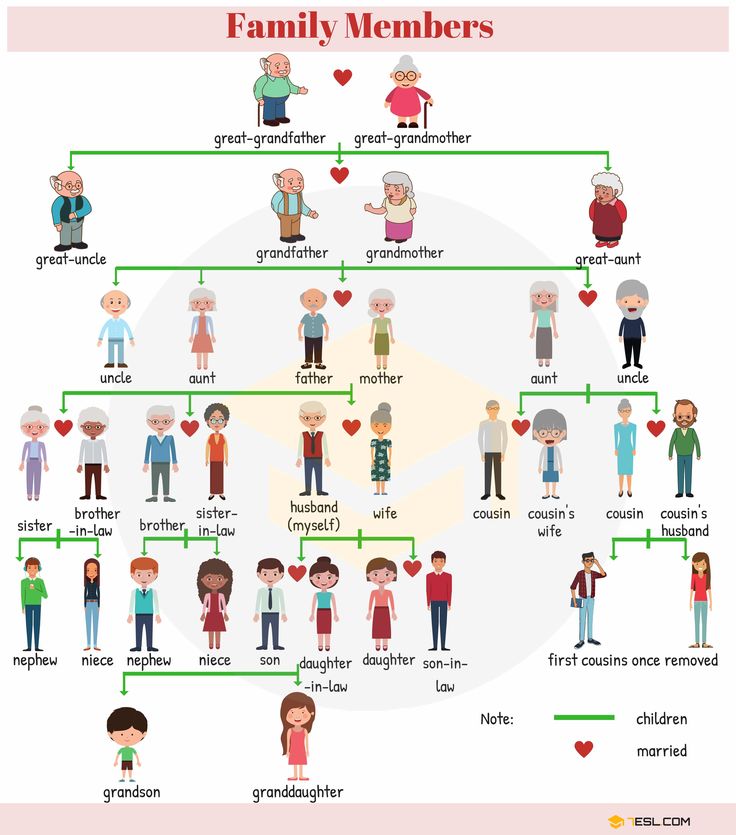 Respecting your daughter’s adult choices is important.
Respecting your daughter’s adult choices is important.
Favouritism:
In the case of dysfunctional families, siblings are assigned roles in early childhood so as to manage the disorder such as drug or alcohol issues. These roles such as Golden Child and Scapegoat may continue into adulthood which may lead to anger and resentment between the mother and daughter and also between siblings. Adult daughters may only become aware of the imbalance in later life and this may lead to friction between the mother and daughter.
Some of the underlying reasons for these types of issues is commonly the generational gap between mothers and daughters and the role of women in society. Historically, the expectation was that the daughter would merely follow in the footsteps of the mother but this is no longer the case. Mothers may feel that they have been deprived in areas of their lives when they see their daughters living “different” and more fruitful lives, this may cause some sadness and maybe anger and loss.
In addition, the societal expectations of women are changing where nowadays, women have a voice and are working in professional capacities; managing both the work and mother role. There is a shift in the role of women in society today and this may cause a clash in the mother and daughter relationship.
Why can this prove particularly difficult for some?
Grief and loss of mother-daughter relationship:
Our mother is the first person we come in contact with, even before we are born as the womb where the mother emotionally bonds with her daughter. Our relationship with our mother provides the template for all future relationships in our lives so it is of vital importance and significance. We are psychologically conditioned to instinctively want to be close to our mother and gain her approval. If there are ruptures in the relationship causing communication breakdowns and unresolved conflict, this can cause huge grief and loss for both parties involved.
Create split in family and cause isolation or loneliness:
Sometimes, as a consequence of a challenging mother-daughter relationship, it can cause a split or gap in the family unit leading to either party becoming isolated or removed from the other family members. This can evoke painful feelings of sadness and loneliness for all parties. Occasionally, triangles can form in families where the dyad of the mother-daughter relationship becomes strained and one party will pull in a third party to seek support or stabilise the relationship. Triangulation can be healthy when a third party may be required to assist in resolving the conflict, but it can become unhealthy when there is excessive stress on all involved and resolution is deterred.
Loss of family unit and sibling relationships:
Damaged mother-daughter relationships can inadvertently affect relationships with other siblings as tension exists. This causes a disruption in the family system and can negatively affect relationships with siblings, which is a huge loss.
Anger:
Grieving the mother-daughter relationship can elicit feelings of anger and disappointment. If the separation process has not been appropriately completed or if either parties are harbouring resentment, feelings of anger may arise for both. Acknowledge that this is a normal response to disappointment and loss, so it is OK to feel this way.
How should a person cope if they are a) estranged from there mum, and b) in a volatile relationship with their mum?
a) How to cope if you are in an estranged relationship with your Mum
Estrangement can be extremely difficult and painful for both the mother and the daughter as there is distance and a void between them.
Seek professional help:
Enlisting the support of a trusted therapist can assist in gaining perspective and clarity on the difficulties that may be present. It is never too late to repair a relationship, and if this is something you want or not, therapy may help. Sometimes, family therapy can be of assistance, that is, if both parties are open to it. Even if your mother or daughter have passed away, therapy may bring some benefit as to why the issues occurred, to heal and find peace.
Sometimes, family therapy can be of assistance, that is, if both parties are open to it. Even if your mother or daughter have passed away, therapy may bring some benefit as to why the issues occurred, to heal and find peace.
Grieve the loss:
If you feel that you cannot maintain a relationship with your mother or daughter, it is important to acknowledge and grieve the loss. Losing a mother or daughter relationship is one of the most painful events across a lifespan, so if you feel there is no reconciliation, grieving the loss can be extremely healing for you.
Stop self-blame:
Estrangement can cause you to feel shame, guilt and powerlessness. Not all mother-daughter relationships are perfect and there are usually ups and downs in navigating differences and views. Holding onto self-blame only cases you to feel hurt so try and let it go.
Cultivate supportive relationships:
Social connection and building a sense of community is imperative. Finding friends and relationships that nurture and support you are really important. Positive connections have health, happiness and well-being benefits so it is vital to seek these out.
Finding friends and relationships that nurture and support you are really important. Positive connections have health, happiness and well-being benefits so it is vital to seek these out.
Focus on how you can carve out your own life:
Find interests and hobbies that bring you joy so that you can focus on other aspects of your life besides family. You are entitled to have a life and to be happy, so try and learn to rely on other things in life for emotional fulfilment and love.
b) How to cope if you are in a volatile relationship with your Mum?
Give yourself permission to take care of your own needs first:
Giving yourself permission to believe this is the first step toward making self-care an intentional, ongoing practice in your life. “Before you assist others, always put your oxygen mask on first.”
Often that begins saying no to others and yes to yourself. Self-care is not selfish and it helps you move from existing to living and it allows you to more authentic by devoting time to yourself.
Establish firm boundaries:
Boundaries are essential in any relationship and are the limits we set in relationships to ensure they are mutually respectful, supportive and caring. Looking at ways in which you can have an OK relationship with your mother or daughter whether it be a weekly phone call, lunch or whatever you feel would work. When your relationship is volatile, it may be necessary to limit the time you spend together to allow each other space to breathe.
Acknowledge your anger:
Your anger is there for a reason, and it is a sign that a boundary has been crossed. In today’s society, anger can be perceived as a negative emotion, but it can be really powerful tool in giving us information when a something isn’t right. Perhaps, look at ways to release your anger by exercising, screaming or journaling. These can be really effective ways to release pent-up or suppressed anger.
Be selective about what you share:
If there are certain topics that you know are “trigger-points”, then try and avoid these in conversation. Keep the conversation light and to the point. If you feel you are being sparked, it is OK to end the conversation and resume at a later date. The key here is about valuing yourself and your time and not to accept demeaning or inappropriate behaviour or be pulled into old family dynamics.
Keep the conversation light and to the point. If you feel you are being sparked, it is OK to end the conversation and resume at a later date. The key here is about valuing yourself and your time and not to accept demeaning or inappropriate behaviour or be pulled into old family dynamics.
Communicate openly:
The foundations of any relationship are based on trust, transparency and clear communication. You cannot control how the other person is going to respond or react but you can control how you do so. Standing in your own power and expressing yourself openly can create clear, direct channels of communication and prevent any misunderstandings down the line. In a sense, you are modelling to the other person how you communicate and is very liberating, although sometimes scary to communicate from an authentic place.
Be assertive:
It is OK to say no to a demand, favour or request. Ultimately, as adults we are entitled to make our own choices and decisions and NO is a full sentence which does not require explanation. You are not obliged to do anything or be anywhere that you do not want to be, so determining what you want and what your needs are is crucial to taking care of yourself.
You are not obliged to do anything or be anywhere that you do not want to be, so determining what you want and what your needs are is crucial to taking care of yourself.
Listen to yourself:
Your feelings and emotions are essentially your road map in how you make decisions. If something doesn’t feel right, then it is probably not right so learning to trust your gut in helping you make decisions and choices.
Manage expectations:
It is worth checking in with yourself around your expectations of your mother or daughter. Are they unrealistic or too high? Or are your needs not being met? This can sometimes bring great clarity about what we actually want from our mother or daughter and if we are asking for too much or getting too little. Generally speaking, our expectations usually come from our own unmet childhood needs of love and attention and it is useful to ask ourselves if we are still relying on our mother or daughter for our own emotional needs. Finding a suitable therapist may help uncover some of these unmet needs and how you can address them.
Finding a suitable therapist may help uncover some of these unmet needs and how you can address them.
Acceptance:
Change can be seen as a challenge and an opportunity – as one person grows and changes, it will change the dynamic of the relationship. This process can be extremely difficult as the other is pushed to adjust to change or remain the same. Equally, change can catalyse a relationship to a different level in a more positive way. It really depends on the individuals who are in the relationship. Change is difficult as it creates a feeling of the unknown which can be scary for most. Sometimes, relationships can be like waves and it is how we surf these changes that matters. Accepting that your relationship is how it is, but maybe accepting that it is not perfect and perhaps “good enough”.
If you would like to get in touch with the author please click below and send a quick email.
When the relationship between mother and daughter is like madness
Special relationship
Someone idealizes his mother, and someone admits that he hates her and cannot find a common language with her. Why is this such a special relationship, why do they hurt us so much and cause such different reactions?
Why is this such a special relationship, why do they hurt us so much and cause such different reactions?
A mother is not just an important character in a child's life. According to psychoanalysis, almost the entire human psyche is formed in the early relationship with the mother. They are not comparable to any others. nine0005
The mother for the child, according to psychoanalyst Donald Winnicott, is actually the environment in which it is formed. And when relationships do not develop in the way that would be useful for this child, his development is distorted.
In practice, the relationship with the mother determines everything in a person's life. This places a great responsibility on a woman, because a mother never becomes a person for her adult child with whom he can build equal trusting relationships. The mother remains an incomparable figure in his life with nothing and no one. nine0005
What does a healthy relationship between mother and adult daughter look like?
This is a relationship in which adult women can communicate and negotiate with each other, live a separate life - each of her own. They can be angry with each other and disagree, dissatisfied with something, but at the same time aggression does not destroy love and respect, and no one takes away their children and grandchildren from anyone.
They can be angry with each other and disagree, dissatisfied with something, but at the same time aggression does not destroy love and respect, and no one takes away their children and grandchildren from anyone.
But the daughter-mother relationship is the most complex of the four possible combinations (father-son, father-daughter, mother-son, and mother-daughter). The fact is that the mother for the daughter is the primary object of affection. But then, at the age of 3–5 years, she needs to transfer her libidinal feelings to her father, and she begins to fantasize: “When I grow up, I will marry my father.” nine0005
This is the same oedipal complex that Freud discovered, and it is strange that no one before him did this, because the attraction of the child to the parent of the opposite sex was noticeable at all times.
And it is very difficult for a girl to go through this obligatory stage of development. After all, when you start to love dad, mom becomes a rival, and both of you somehow need to share dad's love. It is very difficult for a girl to compete with her mother, who is still loved and important to her. And the mother, in turn, is often jealous of her husband for her daughter. nine0005
It is very difficult for a girl to compete with her mother, who is still loved and important to her. And the mother, in turn, is often jealous of her husband for her daughter. nine0005
But this is only one line. There is also a second one. For a little girl, her mother is an object of affection, but then she needs to identify with her mother in order to grow and become a woman.
There is some contradiction here: the girl has to simultaneously love her mother, fight her for her father's attention and identify with her. And here a new difficulty arises. The fact is that mother and daughter are very similar, and it is very easy for them to identify with each other. It is easy for a girl to mix her own and her mother's, and it is easy for a mother to see her continuation in her daughter. nine0005
Many women really have a hard time distinguishing themselves from their daughters. It's like psychosis. If you ask them directly, they will object and say that they distinguish everything perfectly and do everything for the good of their daughters.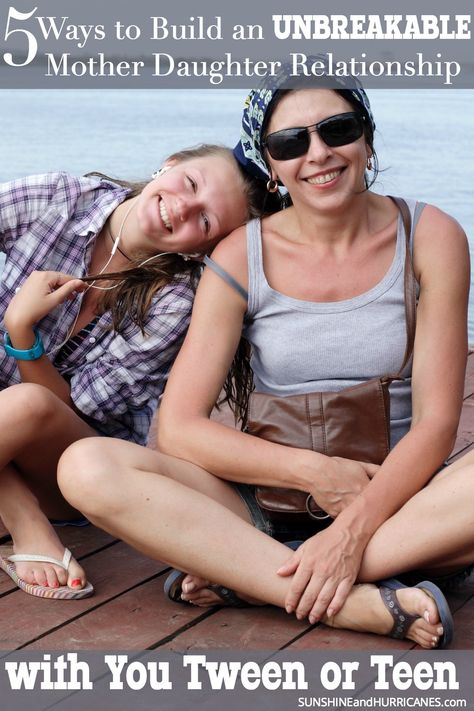 But at some deep level, this boundary is blurred.
But at some deep level, this boundary is blurred.
Is taking care of your daughter also taking care of yourself?
Through her daughter, the mother wants to realize what she has not realized in life. Or something that she herself loves very much. She sincerely believes that her daughter should love what she loves, that she will like to do what she herself does. Moreover, the mother simply does not distinguish between her own and her needs, desires, feelings. nine0005
Do you know jokes like “put on a hat, I'm cold”? She really feels for her daughter. I remember an interview with artist Yuri Kuklachev, who was asked: “How did you raise your children?” He says: “And this is the same as with cats.
No tricks can be taught to a cat. I can only notice what she is inclined to, what she likes. One is jumping, the other is playing with a ball. And I develop this tendency. Likewise with children. I just looked at what they are, what they naturally come out with. And then I developed them in this direction. nine0005
nine0005
This is the sensible approach when a child is viewed as a separate being with its own personality traits.
And how many mothers do we know who seem to take care: they take their children to circles, exhibitions, concerts of classical music, because, according to their deep feeling, this is exactly what the child needs. And then they also blackmail them with phrases like: “I put my whole life on you,” which cause an enormous feeling of guilt in adult children. Again, this looks like psychosis. nine0005
In essence, psychosis is the inability to distinguish between what is happening inside you and what is outside. The mother is outside the daughter. And the daughter is outside of her. But when a mother believes that her daughter likes what she likes, she begins to lose this boundary between the inner and outer world. And the same thing happens to my daughter.
They are the same sex, they are really very similar. This is where the theme of shared insanity comes in, a kind of mutual psychosis that only extends to their relationship.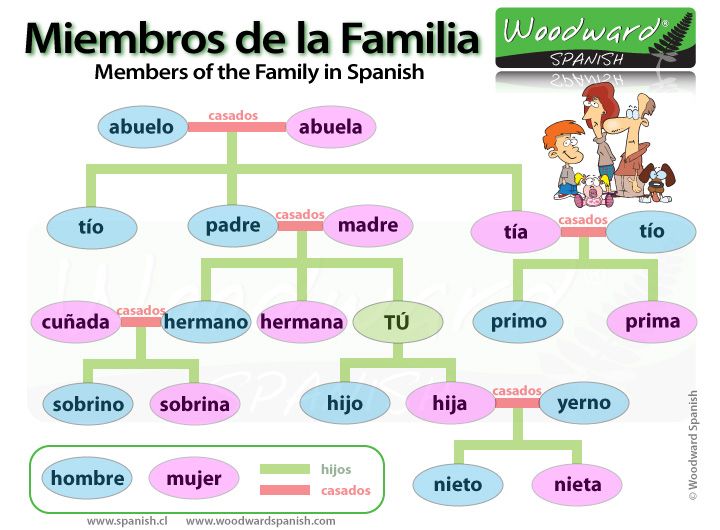 If you do not observe them together, you may not notice any violations at all. Their interaction with other people will be quite normal. Although some distortions are possible. For example, this daughter with women of the maternal type - with bosses, female teachers. nine0005
If you do not observe them together, you may not notice any violations at all. Their interaction with other people will be quite normal. Although some distortions are possible. For example, this daughter with women of the maternal type - with bosses, female teachers. nine0005
What is the cause of this psychosis?
Here it is necessary to recall the figure of the father. One of his functions in the family is to stand between mother and daughter at some point. This is how a triangle appears, in which there is a relationship between the daughter and the mother, and the daughter with the father, and the mother with the father.
But very often a mother tries to make sure that her daughter's communication with her father goes through her. The triangle collapses.
I have met families where this model is reproduced for several generations: there are only mothers and daughters, and the fathers are removed, or they are divorced, or they never existed, or they are alcoholics and have no weight in the family. Who in this case will destroy their closeness and merging? Who will help them separate and look somewhere else but at each other and "mirror" their madness? nine0005
Who in this case will destroy their closeness and merging? Who will help them separate and look somewhere else but at each other and "mirror" their madness? nine0005
By the way, did you know that in almost all cases of Alzheimer's or some other type of dementia, mothers call their daughters "moms"? In fact, in such a symbiotic relationship, there is no distinction between who is related to whom. Everything merges.
Should a daughter be "daddy's"?
Do you know what people say? In order for the child to be happy, the girl must be like her father, and the boy must be like her mother. And there is a saying that fathers always want sons, but love more than daughters. This folk wisdom fully corresponds to the psychic relations prepared by nature. I think that it is especially difficult for a girl who grows up as a "mother's daughter" to separate from her mother. nine0005
The girl grows up, enters childbearing age and finds herself, as it were, in the field of adult women, thereby pushing her mother into the field of old women. This is not necessarily happening at the moment, but the essence of the change is there. And many mothers, without realizing it, experience it very painfully. Which, by the way, is reflected in folk tales about an evil stepmother and a young stepdaughter.
This is not necessarily happening at the moment, but the essence of the change is there. And many mothers, without realizing it, experience it very painfully. Which, by the way, is reflected in folk tales about an evil stepmother and a young stepdaughter.
Indeed, it is difficult to bear that a girl, a daughter, is flourishing, and you are getting old. A teenage daughter has her own tasks: she needs to separate from her parents. In theory, the libido that awakens in her after a latent period of 12–13 years should be turned from the family outward, to her peers. And the child during this period should leave the family. nine0005
If a girl's bond with her mother is very close, it is difficult for her to break free. And she remains a "home girl", which is perceived as a good sign: a calm, obedient child has grown up. In order to separate, to overcome attraction in such a situation of merger, the girl must have a lot of protest and aggression, which is perceived as rebellion and depravity.
It is impossible to realize everything, but if a mother understands these peculiarities and nuances of relationships, it will be easier for them. I was once asked such a radical question: “Is a daughter obliged to love her mother?” In fact, a daughter cannot help but love her mother. But in close relationships there is always love and aggression, and in the mother-daughter relationship of this love there is a sea and a sea of aggression. The only question is what will win - love or hate? nine0005
Always want to believe that love. We all know such families where everyone treats each other with respect, everyone sees in the other a person, an individual, and at the same time feels how dear and close he is. The City How to leave a traumatic relationship with your mother behind and start a new life. The author of best-selling books on family relationships takes a detailed look at the problems that arise in the adult life of women due to childhood trauma caused by the mother. We publish a fragment "Typical wounds" from the second chapter "What power she had over you." nine0005
We publish a fragment "Typical wounds" from the second chapter "What power she had over you." nine0005
Uncertainty
Unloved daughter does not know that she deserves love and attention; she grew up in an environment where she was ignored, not heard or criticized for the slightest provocation. Her mother’s voice sounds in her head, telling her what she is not - smart, beautiful, kind, loving, efficient. This voice will poison her joy from achievements and prevent her from revealing her talents, if not silenced. Some unloved daughters say that they have a feeling that they are "fooling people" and the fear that in a moment of triumph "the truth will come out." This imaginary fraud can coexist perfectly with impressive success. Others are literally crushed by an avalanche of criticism or a constant feeling of abandonment and rejection, as a result of which they become chronic losers. Ironically, by doing less than they could, or worse, by engaging in self-destruction, they only make sure that their mothers were right about them. nine0075
nine0075
Distrust
A receptive and loving mother teaches her child that the world is safe, that this is a place where his needs are met, questions are not left unanswered, that someone will support in case of trouble or difficulties. A daughter with a secure attachment does not find it difficult to rely on people, she does not feel vulnerable, trusting others because of her worldview and confidence in her own judgments. Before the unloved daughter, the world appears completely different - full of threats and populated by people who can hurt or fail. “I always wondered,” one woman admits, “why someone wants to be friends with me. I couldn’t get rid of the thought that there was a catch here, and during psychotherapy I found out that all this comes from childhood.” The trust problem stems from a sense of fundamental insecurity in the relationship with the mother and extends to both friendships and love relationships. nine0075
Photo: Getty Images
All insecure daughters have trust issues, albeit in different ways. A woman with an anxious type of attachment constantly expects to be betrayed, noticing in any word, gesture and facial expression of the interlocutor signs that she needs to be on her guard. She needs constant reassurance that she can trust, and ironically, her wariness often leads to relationships characterized by extreme emotional instability, which, of course, only increases anxiety. nine0005
A woman with an anxious type of attachment constantly expects to be betrayed, noticing in any word, gesture and facial expression of the interlocutor signs that she needs to be on her guard. She needs constant reassurance that she can trust, and ironically, her wariness often leads to relationships characterized by extreme emotional instability, which, of course, only increases anxiety. nine0005
The avoidant woman assumes that total trust that makes her vulnerable is a terrible mistake. With avoidant-rejecting attachment, she makes it her life principle "do not trust anyone", so as not to allow anyone to seize the initiative, with anxious-avoidant attachment, because of the need to protect herself.
Difficulty setting boundaries
Receptive mothers teach their children from infancy a healthy measure of dependence and independence, respecting their emotional and physical personal space, which is not invaded. This reinforces both the child's self-reliance ("you are you, and that's good") and the feeling of being connected ("if you fall, mommy will be there to help you").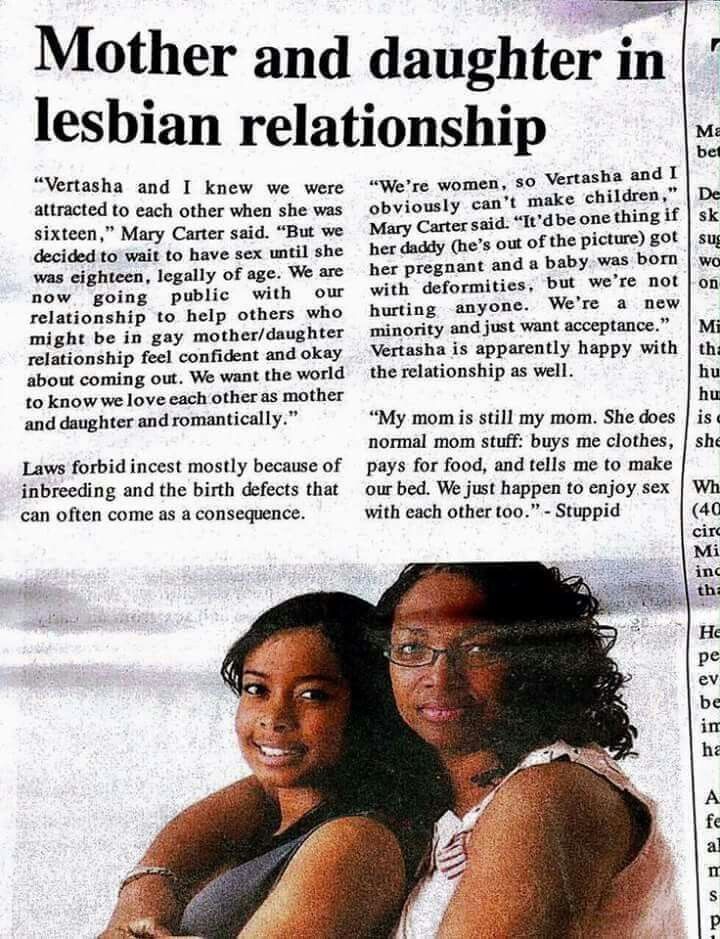 In contrast, it is difficult for an unloved daughter who has been ignored to feel like an independent person, because she is too focused on getting her mother's attention. She often plays the same role in adult life, selflessly pleasing others and suffering from the inability to say no. She literally melts into relationships because she doesn't understand how boundaries between people work, and this can lead to a repeat of her worst nightmare of being ignored. nine0005
In contrast, it is difficult for an unloved daughter who has been ignored to feel like an independent person, because she is too focused on getting her mother's attention. She often plays the same role in adult life, selflessly pleasing others and suffering from the inability to say no. She literally melts into relationships because she doesn't understand how boundaries between people work, and this can lead to a repeat of her worst nightmare of being ignored. nine0005
Daughters of intolerant and shameless mothers who have absolutely no respect for personal space may confuse protective armor or a fortress wall with what constitutes a healthy psychic boundary. An even more serious problem is that the inability to correctly set the boundaries of personal space and the misunderstanding of their importance makes it almost impossible to create and maintain normal relationships until a woman moves the unconscious lessons learned in childhood into the realm of the conscious and does not change the course of action. nine0075
nine0075
Inadequate self-esteem
We learn who we are by observing the facial expressions of other people, especially mothers, and how they react to us, our words and actions. One by one, these signals from early childhood shape self-perception. A loving and sensitive mother helps the child not only to form a positive idea of himself, but also to accept himself. Acceptance allows you to see yourself as a whole person with all the advantages and disadvantages. The main thing is that you can achieve a lot without being perfect, because you know that you will be loved and accepted in any case. nine0075 Unfortunately, none of this happens if the mother does not love her daughter.
Photo: Getty Images
Since the mother's behavior directly affects the child's self-perception, it is difficult for all unloved daughters to look at themselves objectively. Many have absorbed maternal neglect and humiliation, becoming overly self-critical - accustomed to explaining any failure or problem not by circumstances, but by the characteristics of their personality and character traits, considering themselves to be worthless or losers. nine0075
nine0075
Hypersensitivity
For many daughters, words and gestures are emotional triggers to remember how they were treated as children. The burden of the unconscious and unanalyzed past prevents them from going through life in the present. Being sensitive to snubs, real and imagined, and overreacting to any criticism is extremely unproductive and makes life very difficult. A woman may perceive good-natured banter as criticism, obsessively scrolling in her mind an accidentally thrown phrase. Due to her childhood experience, she tends to see hidden meaning in meaningless situations and misinterpret other people's intentions and motives. nine0005
Hypersensitivity is exacerbated by the inability to manage emotions, which I call the "Goldilocks problem." We'll talk more about this shortly.
Repetition of the connection with the mother in adult relationships
Unconscious patterns - mental models of relationships - attract us to the familiar. This is great for a person with a secure attachment: he is attracted to friends and lovers who are reliable people who can open up to others, who genuinely need and enjoy close ties. Unfortunately, people with insecure attachments are drawn to what they know well and find themselves in relationships that ultimately make them unhappy, but nevertheless "comfortable" because they are familiar. nine0005
This is great for a person with a secure attachment: he is attracted to friends and lovers who are reliable people who can open up to others, who genuinely need and enjoy close ties. Unfortunately, people with insecure attachments are drawn to what they know well and find themselves in relationships that ultimately make them unhappy, but nevertheless "comfortable" because they are familiar. nine0005
The search for a comfort zone in which there is nothing comfortable forces the unloved daughter to seek relationships in which she feels the same way as in childhood. “Honestly, I married my mother,” says one woman. “He seemed like the exact opposite of my mother, but he ended up treating me the same way, with the same inconsistency, and again I didn't know how I would be treated. Like my mother, he was sometimes indifferent, sometimes sensitive, mercilessly critical or vaguely approving. Many of you will agree that this woman was not the only one who chose a partner after the model of her mother.